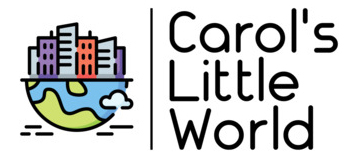A few days ago, I posted about not quitting your day job. It’s great to tell somebody “hey, man, don’t quit your day job!” but probably not very nice to skip over how to quit your day job. That’s where this post comes in. Today, I’m going to start (please notice I did say “start” and not “finish”) discussing how to go about the business of going pro (just to “complete the set” as it were.)
Now, before I start, let me just say that “going pro” can mean different things to different people and, even if you are talking about the same thing, the same “version” of success, if you will, there are always different paths to get there. I didn’t pickup a camera until after I had played music and written a novel-bummed around in other areas of the arts, until I really found my “calling” (as it were) as a photographer. Other people? Maybe come from generations of photographers or maybe had a camera stuffed in their kiddie hands when they were like two years old. Likewise, some photographers do a lot of magazine work and never print their own images while others (I tend to fall into this camp) do a lot of printing and sell matted/framed work (maybe in favor of shunning the magazines.) I’ve talked here about success before, how success is what you make of it and how photography includes a lot of these things, so I won’t re-hash that in detail now, rather I’ll just admit that this topic, this line of topics really, is intended to take you from “guy (or gal) with a camera” to “somebody who makes most of their money from photography.” Use it as you will, it’s worth everything you have paid for it (which, if you’re reading this on the blog, is probably nothing anyway.)
Next up, you might be asking, where does this advice come from? Well, I’ve gathered it from a few different sources, and will try to credit those as I go along, but suffice it to say, I know enough photographers and have been there enough myself to know some of this stuff. I’m not going to bore you with the outer reaches of my bio-you can read that on your own terms (head on over to HouseOfCarol.com if you are really interested in this) instead, let’s just dive in and get to talking about all of this “pro” stuff. (I will leave it open for you-if you do feel something I’m saying is not valid, please do leave a comment and I will attempt to address these as best I can.)
OK, now we’ve got that out of the way, let’s start with some basics. For starers, you should be comfortable with your camera and be able to take pictures well-enough. Of course, it helps if you can take the best pictures possible but going “pro” isn’t always about the best pictures-it’s about being professional and providing what the client needs when the client needs it. Quality is nice but it’s not everything. It is, however, a start, so it helps if you start good right out of the gate. I always strive to take the best images possible with what I have at the time-always. There is no substitute for quality so it’s a big help if you can start with that. (If you feel your images are not up-to-snuff as it were, you can try to increase your picture-taking ability by practicing, joining a local photo group, attending classes, even on-line style class, and just plain ole shooting a lot-tons actually. The more you shoot, the better you tend to get.)
Other than good shots, you’ll need to start with a few, more mundane things.
For starters, yes, I’m going to say it. It really helps if you can save up to about 2 years worth of salary. Having money in the bank helps get things moving along, it also helps give you that all important safety net. Two years of salary is a good springboard and I always recommend to my students you get as close to that as possible. So, save, baby, save!
It also helps if you can start with a show record. I always tell my students, even if I are planning on doing mostly print (read: magazine) work, start by sending you work out to shows. You need to figure out how to matte/frame your work (even if you go simple here, and just get cheap materials from a local hobby store) and start sending you work out to be considered for shows. I’ve talked about juried shows before, they are a great way to get your work out there, and I recommend every photography try to get into some kind of a juried show, even if it’s just a local show. It establishes your “timeline” as an artist and sort of sets your clock rolling. If you’re scared of doing juried shows, the show I posted news about just this week, (“Open Walls”) at the Blackbox Gallery in Portland, Oregon is a fine example of a way to build a show record without having to face the fury of a juror. There are tons of open shows every year, including “Open Walls” and also “Long Shot” at the PhotoCenter Northwest (in Seattle.) Also, check with a local arts organization and check restaurants, coffee shots, hair salons, etc. in your area. There are tons of shows going on all of the time and seldom enough artwork to go around, so start by getting your work out there like this, as soon as you possibly can.
Now, here’s some freebie Carol advice, worth every penny you paid for it. If you are staying at your day job long enough to save up your two years worth of salary, you can also use these two years to get your work “out there” and start doing shows. Most of the shows are easy enough to do while one is holding down a full-time job and you don’t have to be in hundreds of shows to start. Just 3-4 or so is even a good enough springboard so, while you toil away at that pesky day job, start setting your photo career in good motion by starting the process of getting your work out there and start showing. Just as a lot of bands don’t really “come together” until they book a gig, showing work is very important in your photographic development, so you’ll want to do it as soon as possible. Don’t wait, get going as soon as you can on this.
Next up comes the dreaded business plan. Now, you can take the words “business plan” to mean whatever you want to-this can be as formal as doing an actual plan or as informal as a few notes in your personal computer (one which nobody but you will read.) Doesn’t matter really, just have some kind of plan to go about your business. Are you going to do portraits? Sell prints? Do magazine work? To whom? What is your target market? How much do you hope to make? How will you make money? What will you sell? Business or service? How will you handle expenses? Taxes? Who is going to pay for your pet poodle’s haircuts while you are doing all of this? I’m sorry if I sound like a wet blanket here, but you have to put some of this down in writing, otherwise you will be a sea of confusion adrift in an ocean of aimlessness. Doing a business plan will get you thinking (and talking) about money, about plans, about solutions, not just throwing stuff in front of your camera to see what sticks.
Speaking of money, my next topic will be more about finances, specifically, I’ll walk you through a couple of “fake” scenarios so you can decide who is “pro” and who doesn’t yet make the cut. Maybe seeing some real world examples will help you get a handle on your own path to professionalism. And, as usual, do please email me with specific questions or comments so that I might address them as part of this new “path to pro” series for the blog.
Until next time…


Author
informative-thanks…